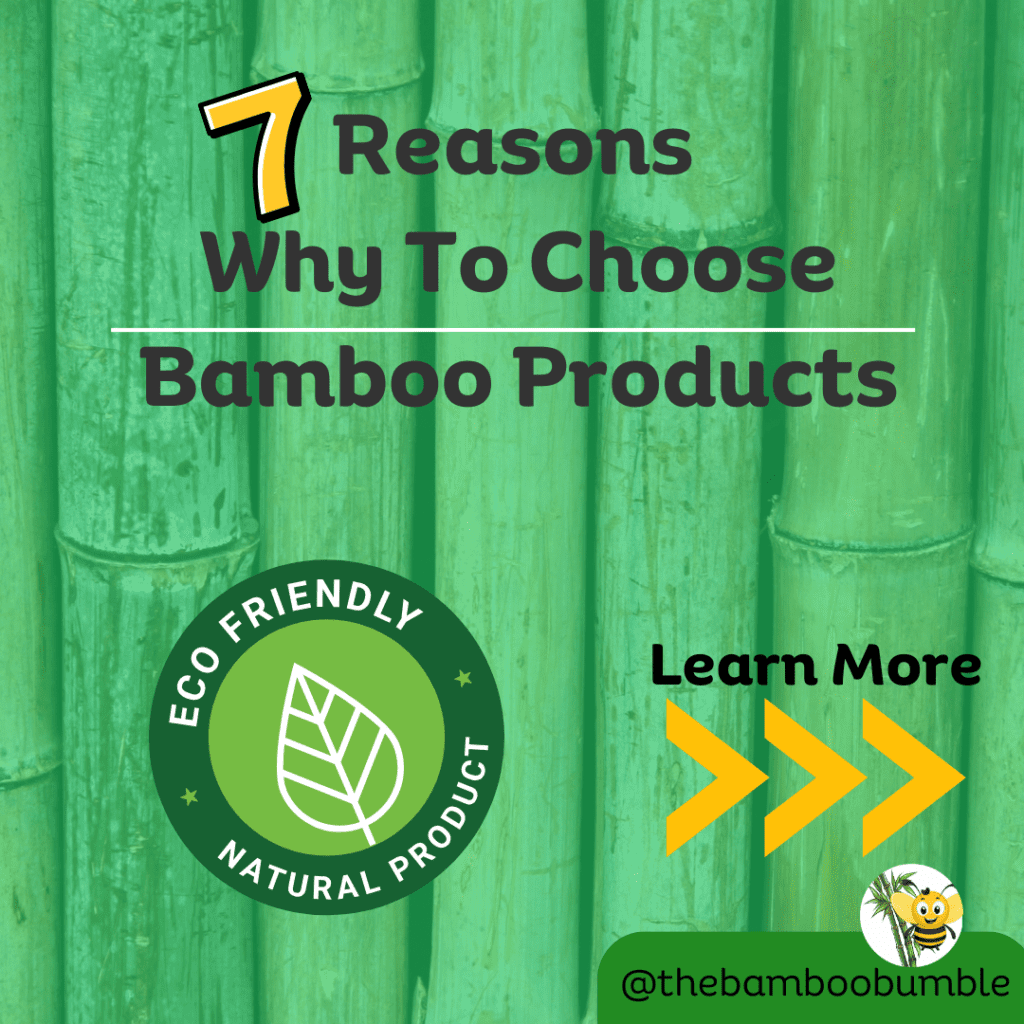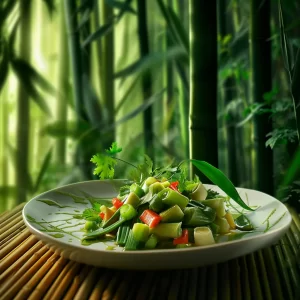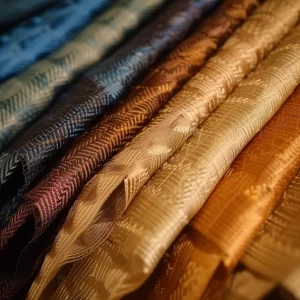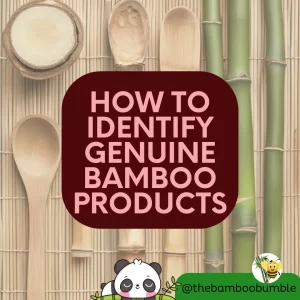Is Bamboo Eco-Friendly: Sustainable Super Plant or Not?
Have you ever wondered how bamboo stands up against other eco-friendly materials in terms of sustainability and environmental impact? In an age where the environmental impact of human activity is scrutinized more than ever, the search for sustainable solutions has led to the recognition of bamboo as a potential cornerstone of eco-friendly innovation. 💚
Its rapid growth cycle and minimal need for agricultural intervention make it a uniquely renewable resource that stands in stark contrast to the slow regeneration of traditional timber and the extensive chemical requirements of cotton cultivation. 🌱
As industries increasingly pivot towards sustainable practices, the versatility of bamboo is being harnessed in novel ways, creating products that are as durable as they are environmentally responsible. 🎋
The implications of widespread bamboo adoption are profound, raising critical questions about its role in carbon sequestration, water conservation, and the displacement of non-renewable materials. 🌍
The potential of this unassuming grass to revolutionize industries and lead the charge in sustainability invites a closer examination of its capacities and the challenges it may face on the path to becoming a pillar of the green revolution. 🌿
Table of Contents
Bamboo Benefits: Key Sustainability Takeaways
What are the key advantages that make bamboo a front-runner in the race for sustainability?
🚀 Rapid Growth and Renewability 🌱
- Bamboo’s incredibly fast growth cycle allows for quick regeneration, making it a standout renewable resource compared to traditional timber and cotton.
🌟 Versatility in Application 🎋
- Bamboo’s use extends beyond traditional products, embracing diverse applications like fabric, flooring, and utensils, presenting an eco-friendly alternative.
🌍 Positive Environmental Impact 🌿
- Bamboo production is more environmentally friendly, requiring fewer chemicals and contributing less to carbon emissions, enhancing its role in a greener future.
🌱 Minimal Care, Maximum Yield 🎍
- Unique among crops, bamboo flourishes with minimal agricultural intervention, reducing the need for harmful chemicals and preserving soil health.
💚 Bamboo Products: Eco-Conscious Choices 🌎
- Bamboo products are not only sustainable but also biodegradable, aligning with eco-friendly values and minimizing environmental footprints.
♻️ Biodegradable Bamboo Solutions 🍽️
- Bamboo offers alternatives to non-biodegradable items like plastic utensils and packaging, promoting waste reduction and environmental stewardship.
📈 Growing Market Presence 🛍️
- The popularity of bamboo products is rising, driven by consumer demand for sustainable options, from textiles to construction materials.
🧵 Transforming Bamboo into Textiles 👚
- The process of converting bamboo into textiles is eco-friendly, involving steps like harvesting, pulping, spinning, weaving, and dyeing, all geared towards sustainability.
🌳 Carbon Sequestration Powerhouse 🌬️
- Bamboo’s ability to absorb carbon dioxide efficiently makes it a valuable asset in combating climate change and promoting biodiversity.
🌟 A Sustainable Future with Bamboo 🌐
- Looking ahead, bamboo’s rapid regeneration, low environmental impact, and innovative applications position it as a key player in sustainable development efforts.
Bamboo’s Growth Spurt: Nature’s Speedy Green Giant
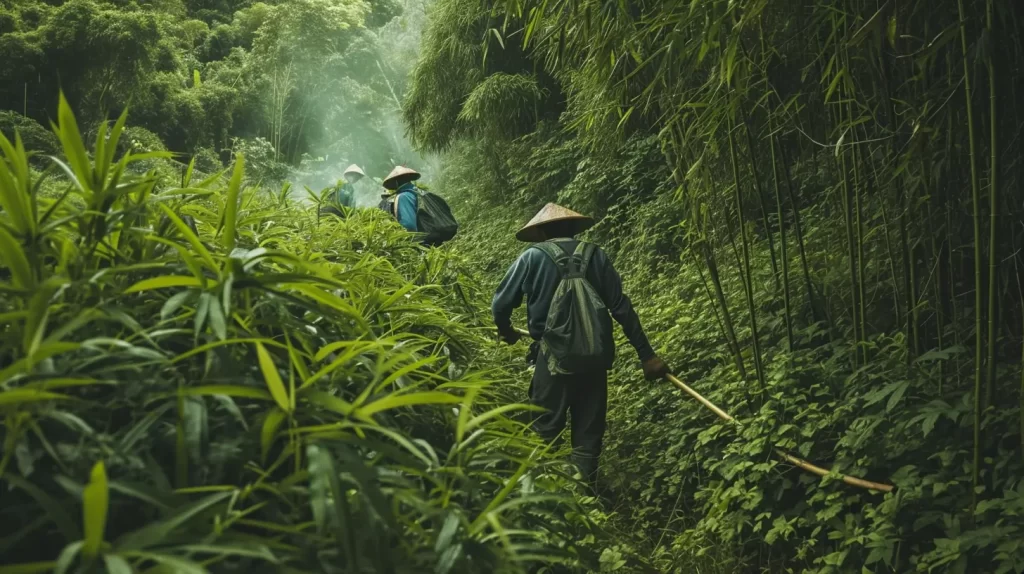
What makes the rapid growth cycle of bamboo so extraordinary and significant for sustainability? One of the most remarkable attributes of bamboo is its extraordinarily rapid growth cycle, which enables some species to grow up to three feet within a 24-hour period. This swift development is not just a natural wonder, but also a symbol of the gentle tenacity that defines our relationship with the earth.
Bamboo, with its quiet strength, offers a promise of renewal and sustainability that few resources can. It stands as a testament to the resilience of nature, where it can flourish with minimal care, avoiding the need for harmful chemicals.
As we weave the story of bamboo into the fabric of our lives, we find a companion in the journey towards a more sustainable future, one that grows side by side with us, at a pace that inspires.
Green Harvest: The Art of Eco-Friendly Bamboo Cultivation
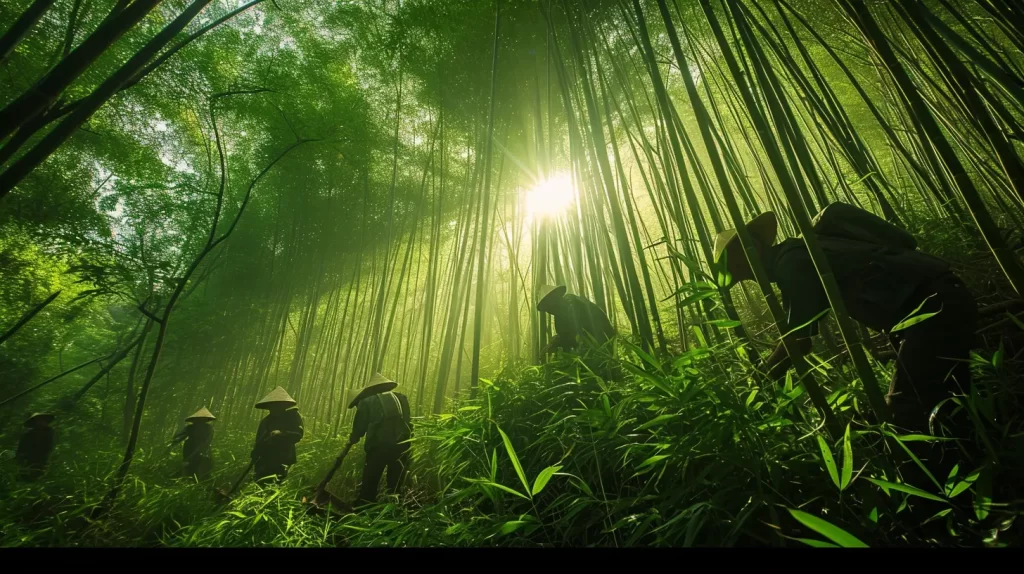
How is sustainable harvesting of bamboo achieved, and why is it crucial for maintaining its environmental benefits? One of the most remarkable attributes of bamboo is its extraordinarily rapid growth cycle, which enables some species to grow up to three feet within a 24-hour period. 🌱 This swift development is not just a natural wonder, but also a symbol of the gentle tenacity that defines our relationship with the earth. 🌍
Bamboo, with its quiet strength, offers a promise of renewal and sustainability that few resources can. 🎋 It stands as a testament to the resilience of nature, where it can flourish with minimal care, avoiding the need for harmful chemicals. 🌿
As we weave the story of bamboo into the fabric of our lives, we find a companion in the journey towards a more sustainable future, one that grows side by side with us, at a pace that inspires. 💚
Tiny Footprint, Giant Impact: Bamboo’s Eco Credentials
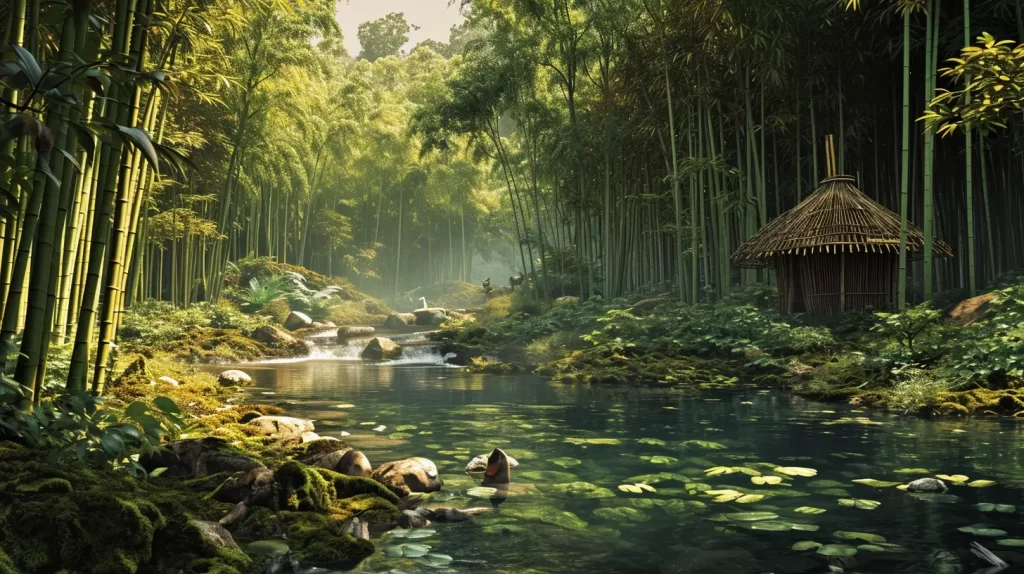
What aspects of bamboo cultivation contribute to its minimal environmental footprint compared to conventional materials? The environmental footprint of bamboo is remarkably low, particularly when compared to traditional materials like plastics and hardwoods, due to its rapid growth and regenerative capabilities. This grass, gentle on our Earth, offers a tender embrace to our environment, providing a whisper of hope in our quest for sustainability. 🌱
Here are the whispers of bamboo’s gentle touch on our planet:
- ✨ Rapid Renewability 🌿: Bamboo matures in just 3-5 years, promising a continuous, loving cycle of growth and harvest without leaving scars on the Earth’s surface.
- ✨ Chemical-Free Cultivation 🌱: It grows strong and tall without synthetic whispers, avoiding the harsh chemicals that often taint our lands and waters.
- ✨ Carbon Sequestration 🌳: Embracing the sky, bamboo forests are voracious consumers of CO2, cleansing the air with each serene sway.
- ✨ Soil Enrichment 🏞️: As bamboo sheds leaves and stalks, it returns vital nutrients to the soil, nurturing the land that sustains it in a reciprocal relationship.
- ✨ Versatile Applications 🏭: From textiles to furniture to bioplastics, bamboo can sustainably substitute many non-renewable materials and fuels used in manufacturing.
The environmental footprint of bamboo is remarkably low, particularly when compared to traditional materials like plastics and hardwoods, due to its rapid growth and regenerative capabilities. This grass, gentle on our Earth, offers a tender embrace to our environment, providing a whisper of hope in our quest for sustainability. 🌱 Here are the whispers of bamboo’s gentle touch on our planet. As we listen to these whispered promises of renewal, we find inspiration to tread more lightly on this earth we call home.
Bamboo Revolution: From Plant to Planet-Friendly Products

How do bamboo products stand as a testament to eco-friendly innovation in today’s market? Bamboo products stand at the forefront of the eco-friendly market, offering a sustainable and biodegradable alternative to traditional materials. Embraced by those who yearn for a more harmonious relationship with nature, bamboo invites a gentle touch on our planet. 🌱
Imagine wrapping yourself in soft bamboo fabric, knowing it caresses the Earth just as tenderly. 💚 As you sip through a bamboo straw ☘️ or walk on bamboo flooring, 🎋 you’re part of a compassionate choice that reverberates with the planet’s heartbeat. 🌍
Eco-conscious minds will find solace in bamboo’s rapid renewability 🌱 and its gracious return to the earth 🌎 at the end of its lifecycle. Each bamboo product carries the promise of a greener tomorrow, nurturing a deep, intimate connection with the environment. 🌿🌳
Degradable by Design: Bamboo’s Answer to Waste Woes
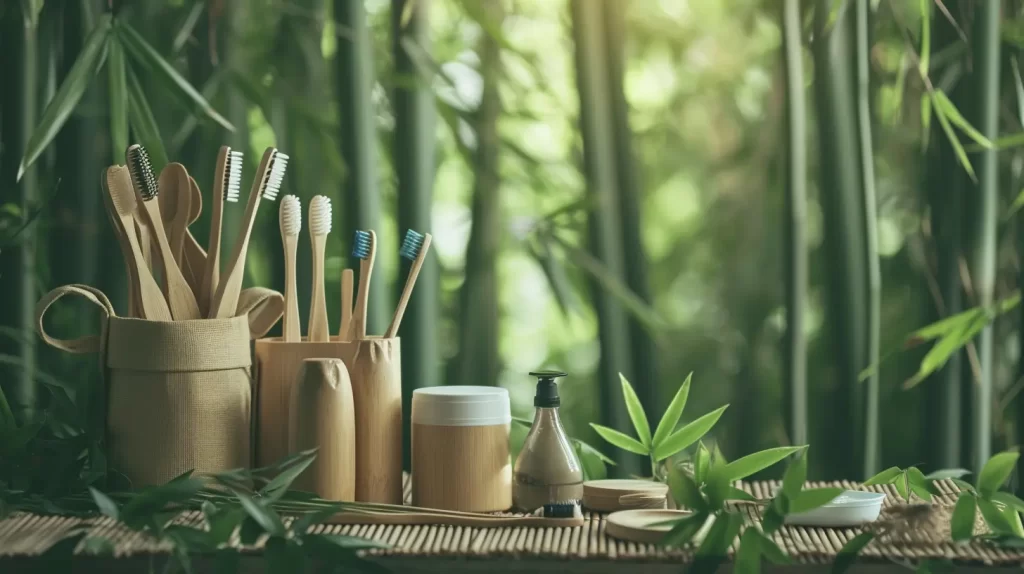
In what ways do biodegradable bamboo products pave the way for a more sustainable and waste-conscious world? In a world increasingly burdened by waste, biodegradable bamboo products offer a promising path to sustainability and waste reduction. 🌎 These natural and eco-friendly solutions connect us intimately to the earth, reminding us of our responsibility to protect our environment. 🌱 Bamboo, with its remarkable growth rate and versatility, provides a substitute for single-use plastics and other non-biodegradable items. 💚
Consider the following bamboo innovations fostering a greener future:
- ✨ Bamboo Cutlery 🍽️: Reusable and compostable alternatives to plastic utensils.
- ✨ Bamboo Toothbrushes 🪥: A substantial shift from plastic brushes that pollute our oceans. 🌊
- ✨ Bamboo Packaging 📦: Revolutionary packaging options that decompose naturally, reducing landfill mass. 🗑️
- ✨ Bamboo Textiles 👕: Durable, soft and breathable fabrics made from bamboo fibers instead of resource-intensive cotton or synthetics.
- ✨ And many more!!!
Embracing these bamboo solutions means engaging in a profound commitment to the planet—a gesture of care for the world we share. 🌍🌱
Branching Out: Bamboo’s Boom in the Green Market
@ info graphic
What factors contribute to the growing market presence of bamboo, and how does this reflect changing consumer attitudes towards sustainability? Reflecting on the environmental benefits of biodegradable bamboo solutions, it becomes evident that bamboo’s market presence has experienced significant growth due to consumer demand for sustainable products. 📈 This burgeoning affinity for bamboo is a testament to a collective yearning for harmony with nature, 🌱where each individual choice cascades into a broader impact. 🌊
Bamboo products, such as soft linens 🛏️ and durable flooring, 🎋 have woven themselves into the fabric of eco-conscious living. 💚 The intimacy we share with these items goes beyond mere utility; it’s a sincere gesture of stewardship towards our planet. 🌍
As a beacon of sustainability, bamboo stands tall🌳 in the market, not just in stature but in the values it embodies – a green revolution 🌱 tenderly cradled in the hands 👐 of informed consumers.
From Stalk to Softness: The Bamboo Textile Transformation
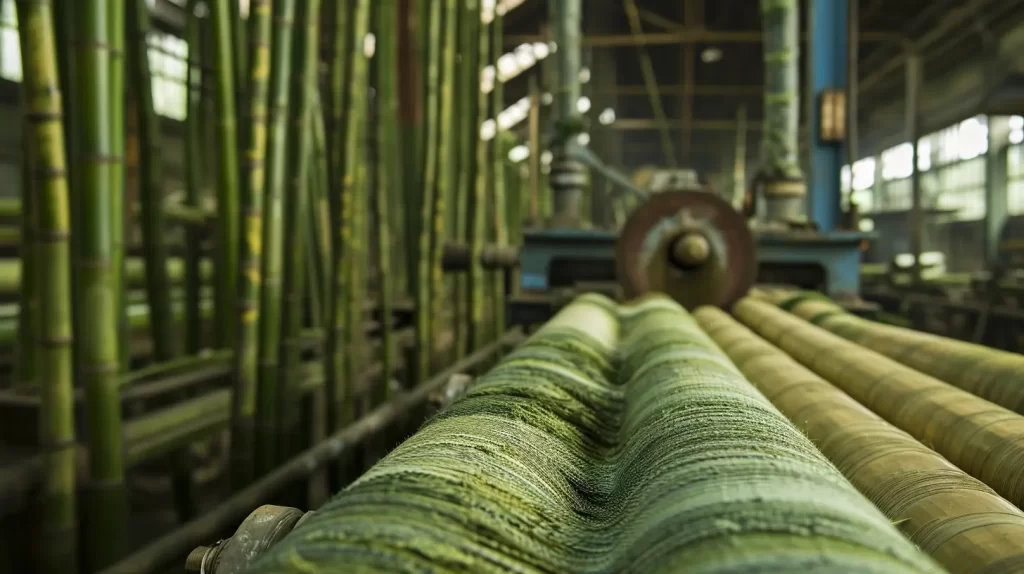
How is bamboo transformed into textiles, and what are the eco-friendly benefits of this process? Transforming this versatile grass into soft textiles, the process of converting bamboo begins with breaking down its fibrous components into a pulp that can be spun into yarn. The resulting material is not only gentle to the touch, but also bears the intimate promise of sustainability and comfort. 💚
Here are the essential steps:
- ✨ Harvesting 🌱: Mature bamboo stalks are harvested, ensuring the roots remain intact for regrowth, a tender nod to nature’s resilience.
- ✨ Pulping 💦: The stalks are crushed and soaked in a solution that breaks them down into cellulose, an embrace of softness from the rigid bamboo.
- ✨ Spinning 🧶: This cellulose is then expelled and dried into strands, which are spun into the yarn that weaves the fabric of eco-consciousness.
- ✨ Weaving 🧵: The spun bamboo yarn is woven into soft, breathable fabrics using loom technology, bringing us one step closer to wearing sustainability.
- ✨ Dyeing 🎨: The natural bamboo fabric can be dyed in a variety of eco-friendly colors, allowing for versatile and vibrant sustainable clothing options.
Each step is performed with a careful balance between technological efficiency and environmental harmony, mirroring the intimate relationship we strive to maintain with our planet. 🌍🌱
Bamboo Breathes Green: The Carbon Capture Champion
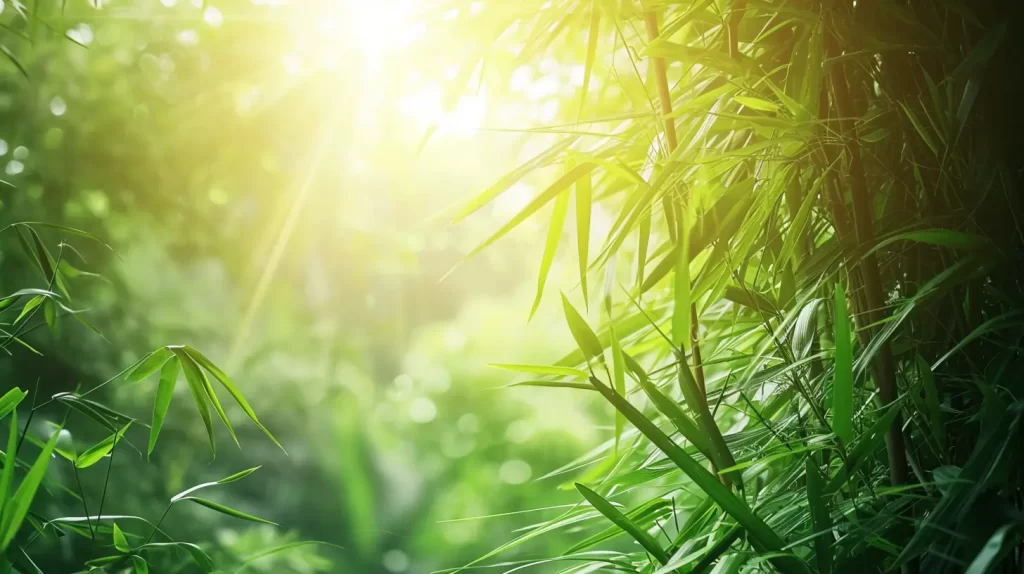
How does bamboo contribute to carbon sequestration, and what implications does this have for combating climate change? Bamboo stands as a formidable ally in the fight against climate change due to its remarkable ability to sequester carbon dioxide from the atmosphere. 🌿 This sustainable grass matures rapidly, offering an efficient cycle of carbon absorption and oxygen release. 🌱 Its dense growth allows for a higher sequestration rate than many tree species, positioning it as a critical component in our collective endeavor to mitigate carbon footprints. 🌳
Delving deeper, bamboo groves don’t just capture carbon; they transform it into biomass, contributing to soil enrichment 🏞️ and further carbon storage. This continuous cycle makes bamboo an attractive, renewable resource that not only shelters biodiversity 🐼 but also fortifies our environmental resilience. 🌍
Embracing bamboo is to embrace a greener future, where every culm planted is a steadfast guardian 💪 against a warming world. 🌎🌱
Sustainable Stalks: Mapping Bamboo’s Future in Eco-Innovation
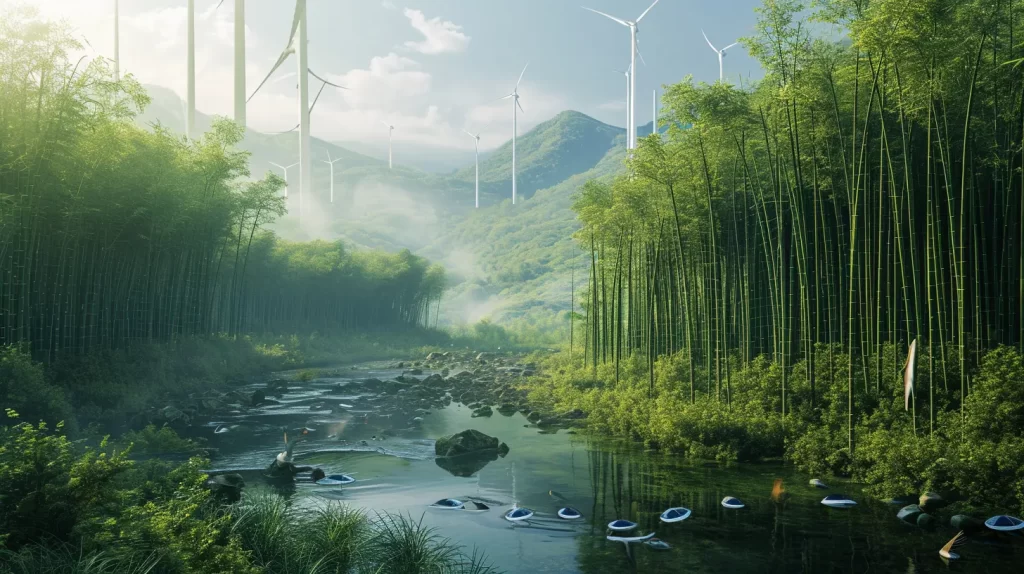
Looking forward, what role might bamboo play in shaping a more sustainable future across various industries? As we envision a more sustainable future, the role of bamboo as a renewable resource becomes increasingly critical in various industries. 🌱 Bamboo offers the promise of a green revolution, and its sustainability is anchored by several key factors:
- ✨ Rapid Regeneration 🌱: Bamboo’s ability to grow quickly and be harvested frequently without destroying the plant base ensures a continual supply.
- ✨ Low Environmental Impact 🌳: Compared to traditional wood sources, bamboo’s cultivation requires fewer chemical inputs and mitigates soil erosion.
- ✨ Versatility and Innovation 💡: Ongoing research into bamboo’s potential applications is expanding its use beyond traditional products, making it a central player in sustainable development.
Embracing bamboo is more than an environmental choice; it’s an intimate commitment to our planet’s health and future prosperity. 🌍🌎🌏

Additional Reading
- The Sustainability of Bamboo: A Comprehensive Guide by Unsustainable Magazine: This article dives deep into the pros and cons of bamboo as a sustainable resource, considering its fast growth, minimal water and fertilizer needs, and potential for deforestation. It also explores the processing of bamboo into different products and the environmental impact of that process.
- Is Bamboo Eco-Friendly or a Greenwashing Ploy? by The Minimalist Vegan: This blog post takes a more critical look at bamboo’s sustainability, highlighting the importance of responsible sourcing and processing. It discusses the different types of bamboo used for commercial products and the potential dangers of unsustainable bamboo harvesting practices. Opens in a new windowtheminimalistvegan.comIs Bamboo EcoFriendly or a Greenwashing Ploy? by The Minimalist Vegan article
Bamboo FAQ
Is bamboo truly a sustainable and eco-friendly material?
Yes, bamboo is one of the most sustainable and eco-friendly materials available. It boasts several key qualities:
- Rapid growth: Bamboo can mature in months, unlike trees that take years, allowing for quick replenishment after harvest.
- Minimal water and pesticides: It thrives with significantly less water and pesticides compared to other crops like cotton, reducing environmental impact.
- Quick regeneration: After harvesting, bamboo shoots sprout from existing roots, eliminating the need for replanting.
These combined factors make bamboo a highly sustainable choice for various products.
What are some common eco-friendly bamboo products?
The versatility of bamboo extends to diverse eco-friendly products, including:
- Bamboo toilet paper: A rapidly renewable substitute for traditional paper, often manufactured with less water and chemicals.
- Bamboo fabric: Used for clothing, bedding, and towels, it consumes less water and energy during production compared to conventional fabrics like cotton.
- Bamboo flooring: A durable and long-lasting choice for sustainable home flooring.
- Bamboo viscose: A regenerated form of bamboo used in textiles, can be a more sustainable alternative to synthetic fabrics, but its environmental friendliness depends on the manufacturing process, which varies in carbon intensity.
How is bamboo fabric beneficial for the environment?
The benefits of bamboo fabric for the environment stem from its sustainable raw material and production process:
- Sustainable source: Bamboo itself is a rapidly renewable resource that requires minimal resources to thrive.
- Reduced water and energy consumption: Compared to traditional fabrics like cotton, bamboo fabric production typically uses less water and energy, lowering its environmental footprint.
Is bamboo flooring a sustainable choice for homes?
Yes, bamboo flooring is a sustainable choice for several reasons:
- Fast-growing resource: Bamboo’s rapid growth rate ensures the replenishment of harvested plants, making it a renewable source for flooring material.
- Durable and long-lasting: Bamboo flooring boasts excellent durability and can last for decades, reducing the need for frequent replacements.
- Lower environmental impact: Compared to wood flooring, bamboo requires less processing and transportation, lowering its overall environmental footprint.
Why is bamboo considered a sustainable and eco-friendly option?
Five key factors contribute to bamboo’s sustainability and eco-friendliness:
- Reduced pesticide and fertilizer needs: Bamboo thrives naturally with minimal chemical inputs, minimizing environmental pollution.
- Harvested without killing the plant: Bamboo shoots regenerate from existing roots after harvest, allowing for sustainable harvesting practices.
- Versatile for eco-friendly products: Bamboo can be used to create a wide range of eco-friendly alternatives to traditional products made from less sustainable materials.
Are bamboo plantations beneficial for the environment?
Yes, well-managed bamboo plantations offer several environmental benefits:
- Biodiversity promotion: Bamboo groves provide habitat for diverse species, contributing to increased biodiversity.
- Soil erosion prevention: The dense root system of bamboo helps prevent soil erosion, particularly on degraded land.
- Carbon dioxide reduction: Bamboo forests act as carbon sinks, absorbing more carbon dioxide than they release, making them beneficial for climate change mitigation.
How can bamboo products benefit the environment compared to traditional alternatives?
Bamboo products benefit the environment through:
- Rapid resource renewal: Bamboo’s fast growth reduces dependence on slower-growing resources like trees, minimizing deforestation and habitat loss.
- Minimal resource consumption: Bamboo thrives with low water and pesticide requirements, leading to a smaller environmental footprint compared to many traditional materials.
- Eco-friendly product alternatives: Bamboo products offer sustainable alternatives to products typically made from less sustainable materials like plastic or wood.
Can the bamboo industry be considered sustainable and eco-friendly?
The bamboo industry can be considered sustainable and eco-friendly when it adheres to responsible practices such as:
- Sustainable bamboo cultivation: Utilizing organic farming methods and maintaining healthy soil conditions in plantations.
- Responsible harvesting: Implementing selective harvesting techniques that preserve the bamboo groves and promote regeneration.
- Eco-friendly processing: Employing sustainable production methods that minimize water and energy consumption, as well as chemical use.
Where can I find bamboo products made with sustainability in mind?
Several avenues offer options for finding sustainably-made bamboo products:
- Eco-friendly retailers: Stores specializing in sustainable products often carry a variety of bamboo goods.
- Online retailers: Numerous online stores offer a wide selection of sustainable bamboo products.
- Certifications: Look for certifications like Forest Stewardship Council (FSC) or Rainforest Alliance to ensure responsible bamboo sourcing.

